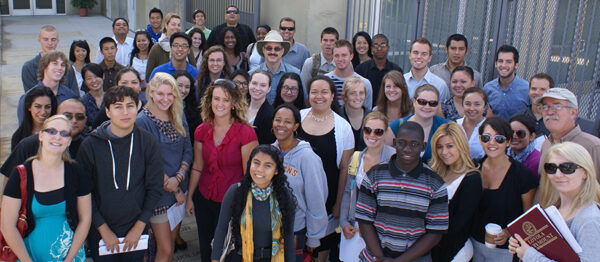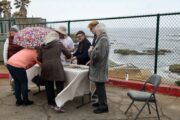CRCC, the USC Office of Religious Life, Loyola Marymount University and the Magnolia Place Family Center partnered together for the Congregations and Community Project last month, a project that aimed at understanding the role of churches and religion in the area to help the community.
The Magnolia Place Family Center works with the Children’s Bureau and is part of the Magnolia Place Community Initiative, which unites more than 40 other nonprofit community organizations in an effort to create sustainable change for families, build neighborhood resiliency and become a national model for other vulnerable communities.
Around 60 students volunteered to conduct field research and in-person interviews in September within Magnolia Place’s 500-block radius of Los Angeles under the direction of CRCC Director of Research Richard Flory, LMU Professor Rebecca Sager and ORL’s Jim Burklo. About 30 of those students came from USC, while the rest are enrolled in Biola University, Azusa Pacific University, and LMU. Students ranged from college freshmen to graduate students of various religious backgrounds, Flory said.
The project was originally scheduled to do two sessions of field research, but the students gathered all of the data needed during the very successful first session on Sept. 18. The second session on Sept. 25 turned into a discussion of the research and experience.
“The students did such a great job, so we thought, let’s do a debriefing on the experience and reflect on what they saw,” Flory said. “They were able to theorize why they saw the kinds of things they saw were the way they were. They were all highly-motivated and really enjoyed that it was both an academic exercise and a way to give back to the community.”
The students, who underwent a training session and received Human Subjects Research certification beforehand, broke up into groups to collect observations, do interviews, and take photos of congregations along with its surrounding neighborhood during a Sunday in September. Once all the data is collected, it will be given to Magnolia Place to help them understand more about the community they serve.
“The research goals are to identify all the religious congregations in that 500-block area, to understand, to the extent that we can, their roles in those communities, and identify their resources and to whom are they available,” Flory said. “We’re also measuring civic engagement. Are they partnering with other groups to do things in the community? Are they commuter churches or are they residential and what difference, if any, does that make in their engagement with the neighborhoods where they’re located?”
The data will also contribute to CRCC’s future research and projects. This project is also part of the place-based religion model, which seeks to understand congregations within the context of geographic communities and the ways in which religious organizations function alongside other institutions, such as schools, health care facilities, nonprofit organizations, and other community resources.
The Congregations and Community Project is part of USC’s response to the President’s Interfaith and Community Service Campus Challenge, a year-long effort to bring students of many faiths together to service their communities.






